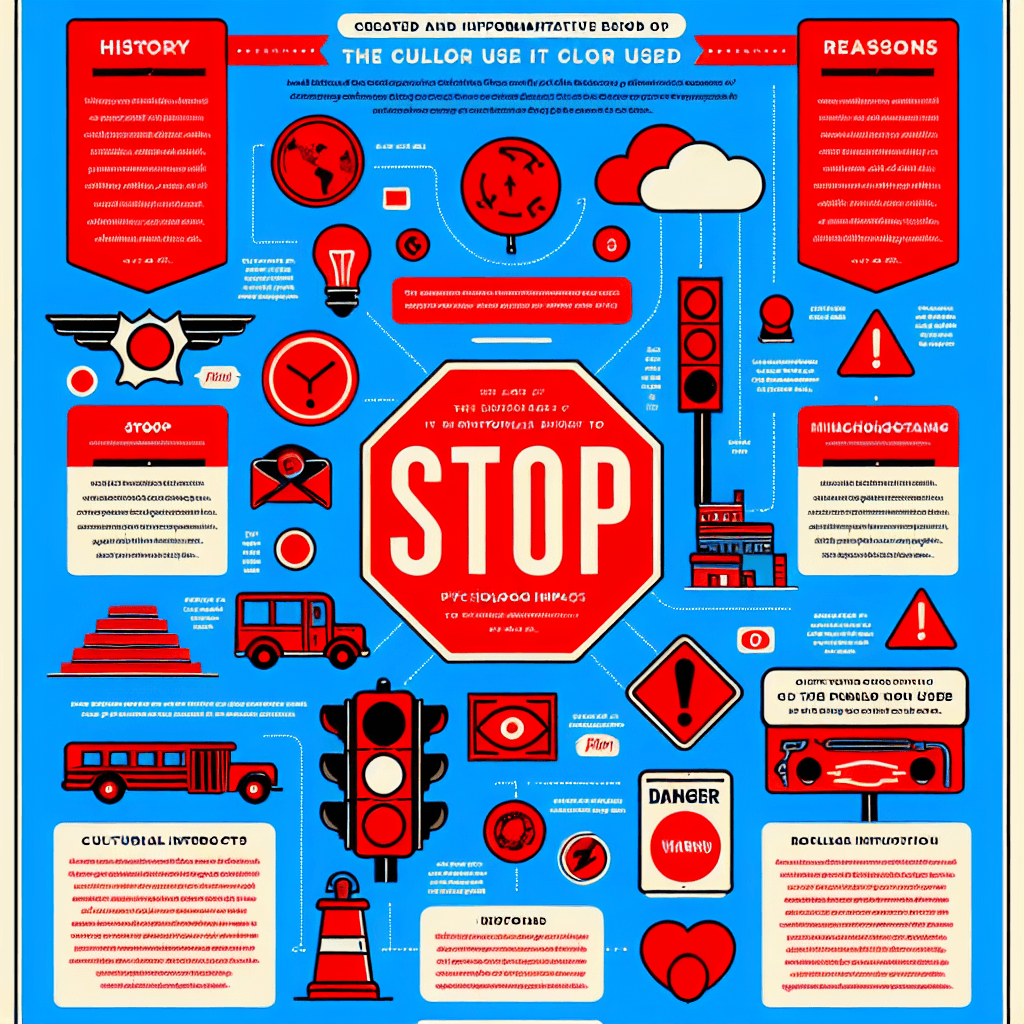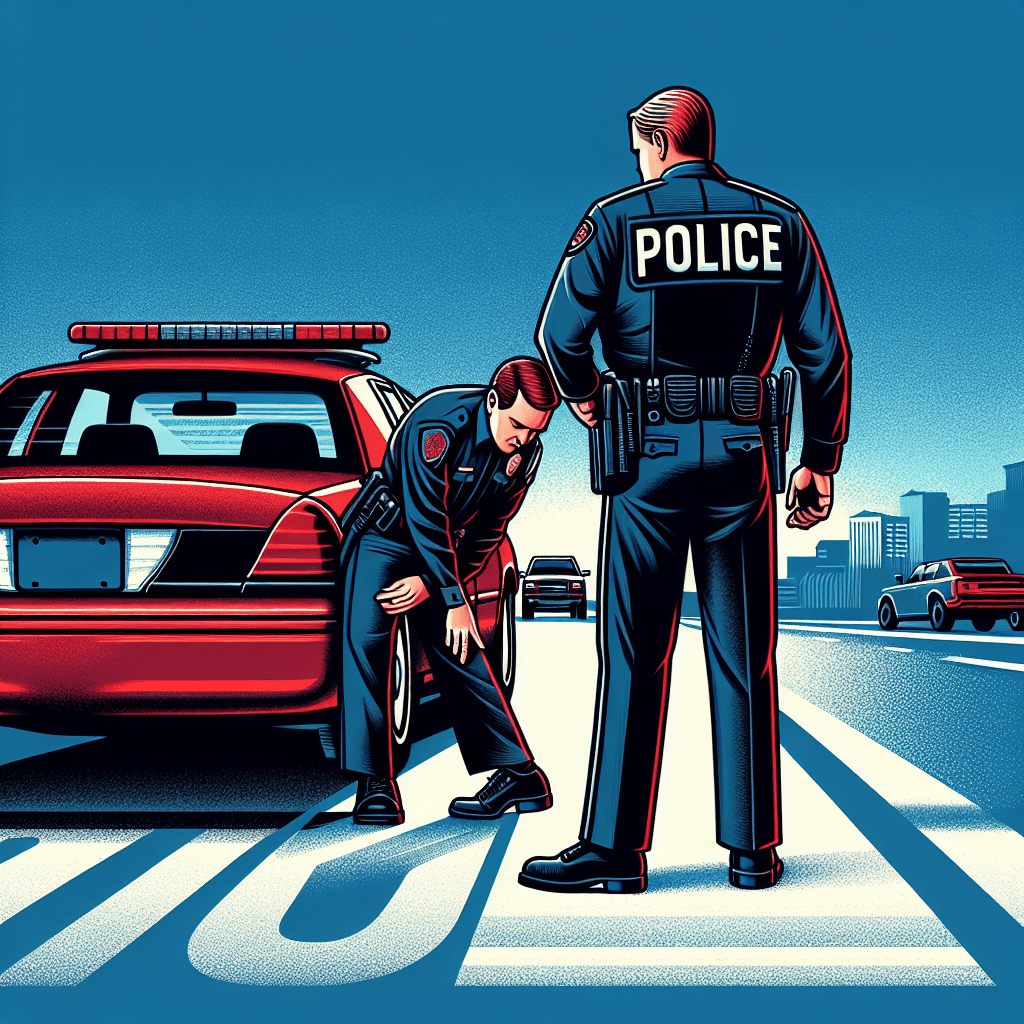Why is the color red almost universally used to mean stop, danger, or warning
From blushing faces to the very blood in our veins, our biological response to red is a primal instinct—one that evolution and physics turned into the world's most effective warning sign.


Too Long; Didn't Read
TLDR: Red is used for warnings because its long wavelength makes it the most visible color from a distance, and humans are biologically wired to associate it with danger, like blood and fire.
Seeing Red: Why is the Color Red Almost Universally Used to Mean Stop, Danger, or Warning?
From the traffic light at a busy intersection to the emergency stop button on a machine, the color red communicates a single, urgent message without a single word: Halt. Danger. Pay attention. Have you ever wondered why this specific color, out of the entire visible spectrum, became the world's go-to symbol for caution? This is no mere coincidence or arbitrary design choice. The ubiquity of red as a warning signal is a fascinating intersection of biology, psychology, and history. This post will explore the deep-seated reasons why red is the universal language of alert, a signal our brains are hardwired to notice and respect.
The Science of Seeing Red: A Biological Imperative
Long before traffic signals and warning labels existed, nature had already primed us to pay special attention to red. The reasons are rooted in physics and our own evolutionary biology.
Physics of Visibility
In the visible light spectrum, red has the longest wavelength of all colors. This physical property has a crucial real-world consequence:
- It travels further: Red light is scattered the least by air molecules, water vapor, and dust. This means it remains visible over longer distances and through atmospheric conditions like fog and rain, making it the most reliable color for a signal that needs to be seen from afar. It’s why brake lights and signal towers are red.
Primate Evolution
Our sensitivity to red is also a product of our ancient past. Most mammals are red-green colorblind, but humans and many other primates developed what is known as trichromatic vision. This evolutionary leap allowed us to distinguish between reds and greens. Scientists widely believe this adaptation helped our ancestors easily spot ripe, red fruits and edible berries against a backdrop of green foliage. This made red a vital signal for survival and sustenance, embedding a heightened awareness of the color deep within our visual processing system.
The Psychology of Red: Our Brain on Alert
Beyond the physics of light, red has a profound and immediate effect on our psychological and physiological state. It’s a color that doesn’t just get seen—it gets felt.
When we see the color red, our bodies can react in subconscious ways. Research has shown that exposure to red can trigger a fight-or-flight response, increasing our heart rate, blood pressure, and alertness. This isn't a learned behavior; it's an instinct. The color is intrinsically linked to two of the most potent signs of danger in the natural world:
- Blood: The sight of blood, whether on ourselves or others, is an immediate and primal signal of injury and danger.
- Fire: A powerful force of both creation and destruction, fire is another fundamental red warning sign that has commanded human respect for millennia.
This deep, instinctual association means that when we see a red warning sign, our brain bypasses slower, more conscious thought processes and immediately snaps to attention, preparing us for a potential threat.
A History Written in Red: Cultural Convention
While our biology gave red a head start, historical and cultural standardization cemented its role as the ultimate warning color. This process wasn't immediate but developed over time as technology and society grew more complex.
The Romans, for instance, used red flags to signal the start of battle. But red’s modern dominance began with the industrial revolution. Early railway systems needed a reliable way to signal trains. While they initially experimented with different colors, red was quickly adopted for "stop" because of its superior visibility, as established by the laws of physics.
This convention was carried over to the roads. The world's first traffic light, installed in London in 1868, used red and green gas lamps based on the railway system. As automobiles became common, the need for universal traffic laws made red the international standard for "stop." The iconic octagonal red stop sign, first standardized in the U.S. in the 1920s, further solidified this association. Today, international agreements like the Vienna Convention on Road Signs and Signals ensure that a driver from Japan can understand a red light in Brazil, making it a critical tool for global safety.
Conclusion
The reason red means "stop" is a perfect storm of science, instinct, and history. Its long wavelength makes it physically superior for long-distance signals. Our evolutionary biology has primed us to notice it, and our psychological makeup links it to primal concepts of danger like blood and fire. Finally, centuries of cultural convention, driven by the need for unambiguous safety signals on our railways and roads, have cemented its status across the globe. So, the next time you press your foot on the brake at a red light, you’re not just obeying a traffic law—you’re responding to a powerful signal that has been shaped by physics, evolution, and human ingenuity.
More Articles

Why do movie punches sound so much crunchier and louder than real ones?
That sickening, bone-crunching punch you hear in the movies is a lie, and the secret ingredient is probably sitting in your refrigerator right now.

What makes a beer bottle suddenly foam over just from a light tap on top?
It’s not magic, it’s a shockwave; discover the explosive physics that turns a gentle tap on your beer bottle into an instant foamy geyser.

Why do police officers touch the back of a car during a traffic stop?
It’s not a random habit; that simple touch is a calculated, old-school tactic designed to leave a crucial and potentially life-saving piece of evidence behind.